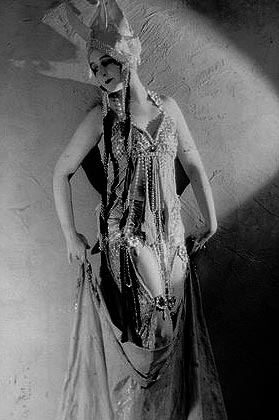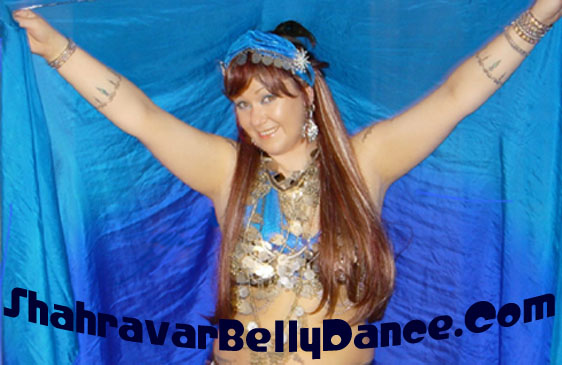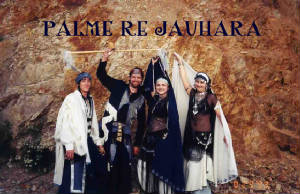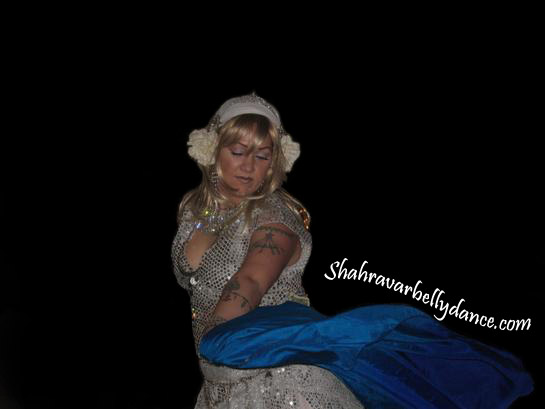|

But when the self speaks to the self, who is
speaking? the entombed soul, the spirit driven in, in, in to the central catacomb; the self that took the veil and left the
world - a coward perhaps, yet somehow beautiful, as it flits with its lantern restlessly up and down the dark corridors.
Virginia Woolf




Were I called on to define, very briefly, the term
Art, I should call it 'the reproduction of what the Senses perceive in Nature through the veil of the soul.' The mere imitation, however
accurate, of what is in Nature, entitles no man to the sacred name of 'Artist.'
Edgar Allan Poe

Dance of the Seven Veils
It
is difficult to properly research this topic because women moving with veils are popular subjects. This topic was enjoyed,
explored, and exploited by artists and opportunists from ancient days into the present. Dancing with veils has alternately
invoked images of genuine modesty as well as erotic images that accentuate the nudity. Ancient deities were said to ascend,
descend, and sometimes fly. This motion is depicted in art with flowing veils but some of the deities also danced. It is difficult
to discern if they are simply moving or dancing in these artistic images?
When
we research ancient stories in the Middle East we find the Myth of the Goddess Ishtar who to regain the soul of her dead husband
passes through seven times seven gates to the underworld, dancing, and beguiling the guards even leaving veils, and jewels
to gain admittance to the Netherworld in search of her beloved.
Studying the number Seven or Seph is also of historical significance. This
has been a superstitious number since the dawn of time. Often reseached by Numeroligists.
I
believe that Oscar wilde derived his dance of the seven veils from the much older Myth: the ancient Babylonian/Egyptian
Ishtar. Isis was considered a veiled goddess also.
These
ancient ideas of the veil still permeate the current custom of the wedding veil, lifting the brides veil by her husband.
*Veil
dancing similar to what we see today did not make its way into the formal Oriental dance theaters until the 1940's. The historian
Morocco describes a conversation she had almost 30 years ago with the famous Egyptian Oriental dancers Samia Gamal and Tahiya
Carioca. Morocco asked why she had not seen veil dancing in her extensive travels to North Africa and the Middle East. They
said that until recently they had never seen it or heard of it. However, they said there was a famous Russian ballerina and
ballet teacher who King Farouk of Egypt hired to teach his daughters. Her name was Ivanova, and in the 1940's, she taught
Samia Gamal how to carry a veil for her entrance and to improve her arm carriage. Ms. Ivanova adopted this practice from a
Caucasian dance perhaps from Azerbaijan (Morocco). She taught other famous Oriental dancers such as the Jamal Twins (Gray,
p.17). Samia Gamal made veil dancing popular in the Egyptian theaters and performed it in the United States and in a movie
entitled "Ali Baba And The Forty Thieves" which was then exported to other countries. This became popular and was incorporated
by other Oriental dancers in their repertoires. The Ballet Russe added the veil to some of their choreographies, perhaps borrowing
the idea from the Caucasus and/or perhaps borrowing the idea from Oscar Wilde's Salome. Ballet dancers depicted Salome or
Cleopatra, and the corps de ballet performed dances carrying veils. Veil dancing in the United States had several early roots
in "The Dance Of The Seven Veils" of Oscar Wilde, the famous skirt dancers Kate Vaughan and Loïe Fuller, and in Hollywood
visions of the ancient Orient (see the section on the Dance Of The Seven Veils [in the full manuscript]). It is quite possible
that Hollywood was influenced by the posed women who were undraping themselves on the postcards from the turn of the century.*
Samia
Gamal made veil dancing popular in the Egyptian theaters and performed it in the United States and in a movie entitled "Ali
Baba And The Forty Thieves" which was then exported to other countries. This became popular and was incorporated by other
Oriental dancers in their repertoires, And thus we see "modern" veil dancing is reborn.
Modern
veil work is Dynamic, and Passionate. It is a grander expression
of a dancers body it also inspires ancient dreams, visions.
Shahravar Jewel of Bellydance 2007
*Excerpt from Elizabeth Artemis Mourat's manuscript,
The Illusive Veil
|

